If you’re anything like me, the idea of haunted libraries will conjure up the opening scene of Ghostbusters (1984). Our heroes investigate disturbances at the New York Public Library and encounter a ghost that tells them to shush.
Surprisingly, this doesn’t seem to be so far off the mark if we look at tales of haunted libraries.
From monarchs to former librarians, a range of libraries seem to offer more than just books and quiet study spaces. Let’s look at some examples of haunted libraries!
Ghosts in the Stacks in Newcastle upon Tyne
If you head to the bottom of Westgate Road away from the Central Station, you’ll spot a 19th-century Grade II listed building. It’s the home of the Literature and Philosophical Society, known as the Lit & Phil. The building actually stands on part of Hadrian’s Wall.
The society dates to 1793, although the building dates to 1825, being built in Bolbec Gardens. Joseph Swan demonstrated his incandescent light bulb here on 18 December 1878. The Lit & Phil is the largest independent library outside of London.
According to paranormal investigator Steve Watson, over sixteen ghosts live at the Lit & Phil. A woman resides in the basement, thought to be a former worker who continues to move the shelves. People report hearing her voice and footsteps down there. The other basement ghost is an aggressive man who bangs on the metal pipes (Watson 2021: 8-9).
One of the ghosts of the Lit & Phil is believed to be T. H. Marr, a sub-librarian between 1893 and 1930. It seems he loved the library so much that he returned after he died (Histon 2000: 24).
A caretaker reported hearing the sound of pages turning in a cubicle in the reading room. The caretaker looked to see who it was, but found the cubicle empty (Histon 2000: 24). I must admit, I’ve sat working in the reading room before and had the distinct feeling of someone standing far too close behind me. Yet I’ve been sat directly in front of a bookcase…
One evening, the librarian got ready to lock the library when she encountered an assistant. The clearly shaken assistant reported a strange presence in the reference room. While the librarian tried to reassure her, they passed the Reading Room, where they felt a presence. Apparently, a shadowy figure even loitered in the space (Histon 2000: 24).
Shush?
Vanessa Histon suggests it may have been T. H. Marr (Histon 2000: 24). Perhaps it is Marr who tells visitors to shush if they talk too loudly. Books apparently fall off shelves of their own accord (Watson 2021: 9). This latter phenomenon appears to be common to stories of haunted libraries.
Other ghosts apparently include a witchfinder and a little girl. A dark hooded figure apparently wanders the balcony in the main library.
Watson suggests this might have been the 17th-century witchfinder that condemned fifteen Newcastle witches to death in 1649 (2021: 9). I’m not so convinced. Unless the witchfinder stayed in lodgings on the site during his time in Newcastle, why would a 17th-century witchfinder patrol a 19th-century building?
In October 2012, video footage appeared to show a fire door opening on its own. Paranormal Database suggests a gust of wind was more likely (Paranormal Database 2023). I tried a couple of EVPs in the library, but unfortunately there was too much background noise during the day to ascertain any responses on the recording.
I know, you’d think a library might be quiet, wouldn’t you?
Civil War Ghosts in Oxford
Some libraries can name their ghosts. Colonel Francis Windebank is said to haunt Oxford’s Merton College Library. Windebank was a Royalist, and in April 1645, he held a ball at Bletchingdon Park with his new wife. Cromwell’s forces attacked during the ball, and Windebank surrendered – most likely to protect his friends.
He tried to explain himself to King Charles, who dismissed his excuses and court-martialled him for not protecting Bletchingdon Park. The court found him guilty in three hours and executed him by firing squad.
He ended up in the library because the firing squad used a length of town wall that adjoins Merton College. Windebank also wanders the execution site (Burrows 2018).
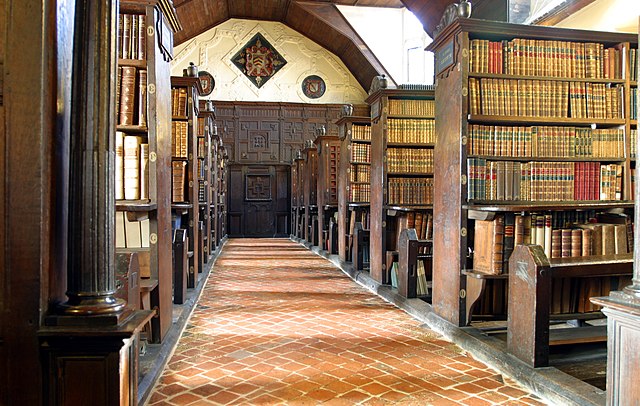
St John’s College also boasts a spirit from the same period. The Long Parliament impeached William Laud, Archbishop of Canterbury, in 1645, leading to his beheading. His bones ended up under the altar of the college chapel.
Yet he spends much of his time in the college library. Over the years, students have reported seeing him remove his head before rolling it at people. Others have said he plays football with it while carrying a lit candle (Burrows 2018).
That said, Emma French notes this myth comes from guidebooks, and not from living memory (2017). Still, more recent reports seem to include footsteps in the long reading room, known as the Laudian Library. Given Laud’s connection with the room, his presence here makes sense. French explains no one has ever been able to account for the footsteps with mundane causes (2017).
A Visit from a King?
Finally, we can’t visit Oxford without mentioning the famous Bodleian Library. It’s apparently haunted by none other than King Charles I. The library denied him permission to remove books in 1645, which might explain his ghost’s behaviour. Apparently, he runs around in the upper reading room at night, pulling books from the shelves to read a single line before putting them back (Burrows 2018).
This sounds like he’s practising bibliomancy, or the art of divination by book. Simply ask your question, choose a book, let it fall open, and read the first sentence your gaze lands on. There’s your answer! The Bible was a common choice on New Year’s Day for a year-ahead reading.
The Haunted Harry Price Collection, London
Senate House itself is a weird enough looking building on its own. George Orwell used it as inspiration for 1984‘s Ministry of Truth.
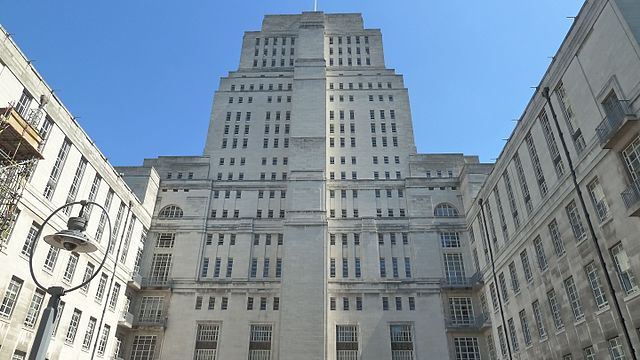
Senate House Library in London houses the Harry Price Collection – so that’s almost 13,000 items on magic and the paranormal. Infamous psychical researcher Harry Price collected them during his lifetime. The collection used to live on the eighth floor, and library staff have noticed strange phenomena. People hear both loud laughter and whispering, while others see floating books and apparitions. One is a cloaked figure, and the other is a Blue Lady that glows (French 2017).
According to Christopher Fowler, the Blue Lady also appears in the Senate Room (2017). It’s rare to come across female ghosts that aren’t white, grey, green or red (occasionally pink). I’d love to know more about her!
One of London’s lost rivers also flows beneath the building, although I cannot find out which one – and trust me, I have checked. A study from 1960 by G.W. Lambert, The Geography of London Ghosts, claimed that around 75% of the paranormal activity in London happens near buried waters (Ackroyd 2012: 49). Whether this is thanks to subterranean water spirits, ghosts, or the strange properties of sound created by a buried stream remains to be seen.
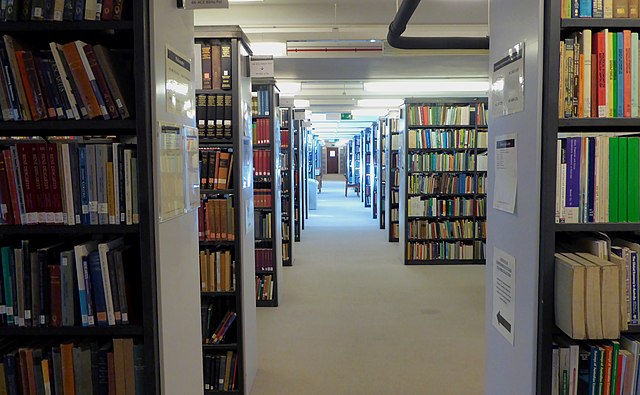
It’s not just the eighth floor. Lights come on by themselves, cold spots appear, and books move on their own on the higher floors. A former assistant recalled encountering a white-haired man in a grey suit on the seventh floor in the 1980s (The Ghosts of Senate House 2014). He was very pleasant, but she only discovered later that no one had issued a stack pass that day, so no one could have been on that floor (2014).
Even the lift is haunted. Sir Edwin Deller, the University of London’s principal, was crushed to death in the lift shaft in 1937, so people assume he is the lift ghost (2017). Check out the Ghosts of Senate House blog for more stories related to the Senate House Library.
A Ghost Librarian in Wales
Of course, not all libraries are purpose-built, standalone buildings. Castles and stately homes often boast their own libraries – and Raglan Castle in Monmouthshire, Wales was no exception. Built between 1435 and 1525, it’s now largely a ruin. But tourists report seeing a figure beckoning to them from a particular castle wing. This wing once housed the library, so people assume the figure is the castle librarian.

It’s certainly an interesting theory. During the Civil War, the library hid the castle’s collection of valuable texts in a tunnel under the castle. Given Raglan’s library was destroyed when the enemy got inside, the librarian’s foresight should be commended.
No one knows what happened to the library, though some think his ghost guards his hidden cache. A schoolgirl apparently saw him in 2001, so who knows if he’s still looking for someone to help him recover the books? (Jones 2023) It would certainly help the story to have more recent sightings.
Other Occurrences
The Mussenden Temple sits in the surroundings of Downhill Demesne, in Northern Ireland. It dates to 1785 and was designed as a library for the 4th Earl of Bristol’s niece. A strange patch of blood apparently manifests on the floor. It evaporates minutes later, and no one knows why it even appears (Paranormal Database 2023).
Holborn Library appeared to suffer a cluster of supernatural events in the 2010s. An archivist visited the third-floor bathroom and saw a person walking behind her in the mirror. When she turned, no one was there. An art curator went up to the fourth floor, which was not in use at the time. An invisible presence shoved them in the shoulder. A cleaner fled from the basement and was so scared by what she had seen that she refused to return. Workers also report lights in the reserve stock room, and doors opening and closing on their own (Paranormal Database 2023).
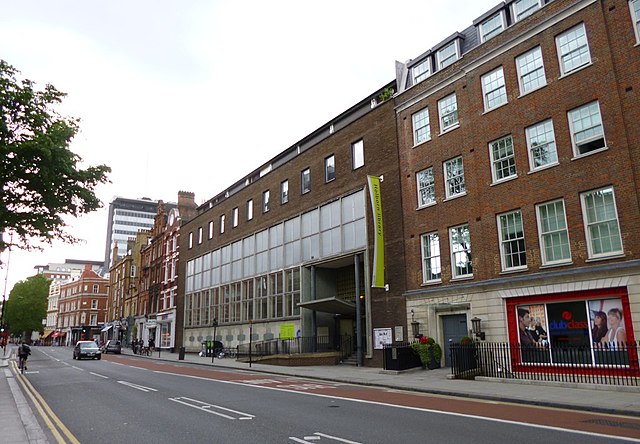
Up in Lerwick in Shetland, the library used to be a church. It’s apparently haunted by a man in a brown coat. Staff report disembodied footsteps in the basement, while books fly off the shelves (Paranormal Database 2023).
And who can forget Chetham Library in Manchester? While not haunted, it was reputed to be the site where Dr. John Dee conjured the Devil…who left a hoofprint scorched into a table!
What do we make of these haunted libraries?
This is just a sample of the available tales. They bear some points in common, such as books moving on their own, people feeling presences in empty rooms, or doors that move independently.
True, many of these things can be explained by rational means. As I write this, I feel like I’m being watched in the Lit & Phil, but I have my back to a massive room. I was sure there was a presence in the upstairs music collection, but is that because I want there to be a presence?
Some of the stories may be more common in guidebooks, especially where they feature named ghosts like Charles I.
But then others are so unspectacular you almost think they must be true. The quiet ssssh in an empty room. The footsteps in a quiet reading space. Figures wandering the stacks but doing little to intervene, except to speak to an unsuspecting assistant. Without investigating more fully, who knows?
Though as a diehard book friend and lover of libraries, I don’t need much of an excuse to visit one…
Do you know of any haunted libraries?
References
Ackroyd, Peter (2012), London Under, London: Vintage (aff link).
Burrows, Deborah (2018), ‘Ghostly Oxford’, The History Girls, https://the-history-girls.blogspot.com/2018/08/ghostly-oxford.html. Accessed 25 September 2023.
Fowler, Christopher (2017), ‘The Most Haunted ‘House’ in London?’, Christopher Fowler, https://www.christopherfowler.co.uk/blog/2017/01/02/the-most-haunted-house-in-london-2/.
French, Emma (2017), ‘Apparitions in the archives: haunted libraries in the UK’, OUP Blog, https://blog.oup.com/2017/10/haunted-libraries-uk-great-britain/.
The Ghosts of Senate House (2014), ‘1980s Memories of a Library Assistant’, The Ghosts of Senate House, https://ghostsofsenatehouse.blogspot.com/2014/05/1980s-memories-of-library-assistant.html.
Histon, Vanessa (2000), Nightmare on Grey Street: Newcastle’s Darker Side, Newcastle upon Tyne: Tyne Bridge Publishing (aff link).
Jones, Richard (2023), ‘Librarian Ghost of Raglan Castle’, Great Castles, https://great-castles.com/raglanghost.html.
Paranormal Database (2023), ‘Library Ghosts, Folklore and Forteana’, Paranormal Database , https://www.paranormaldatabase.com/reports/library.php.
Watson, Steve (2021), Paranormal Newcastle, Stroud: Amberley Publishing (aff link).
Nutty about folklore and want more?
Add your email below and get these posts in your inbox every week.
You'll also get my 5-step guide to protecting your home using folklore!


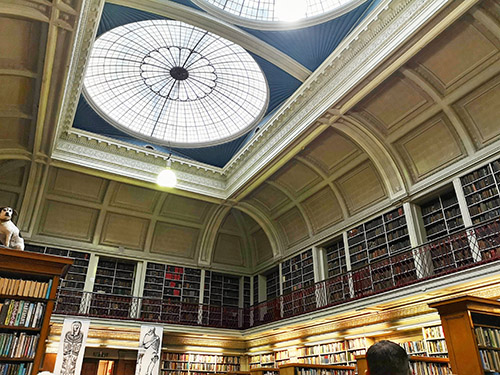

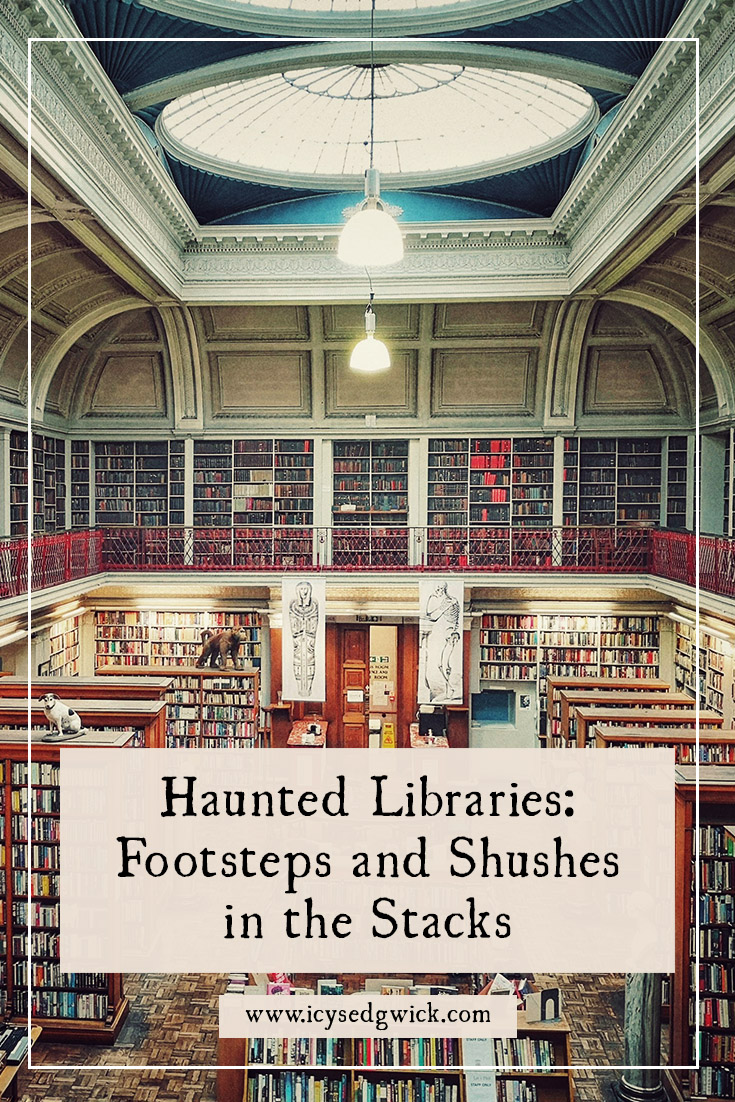





Have your say!